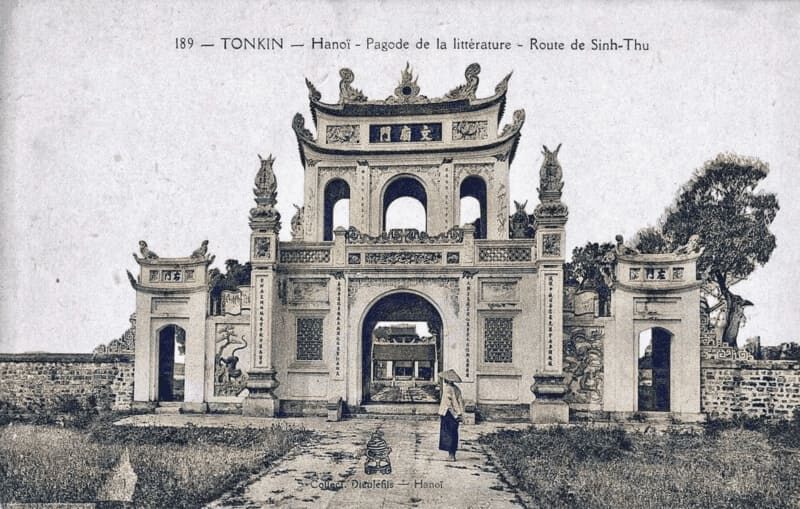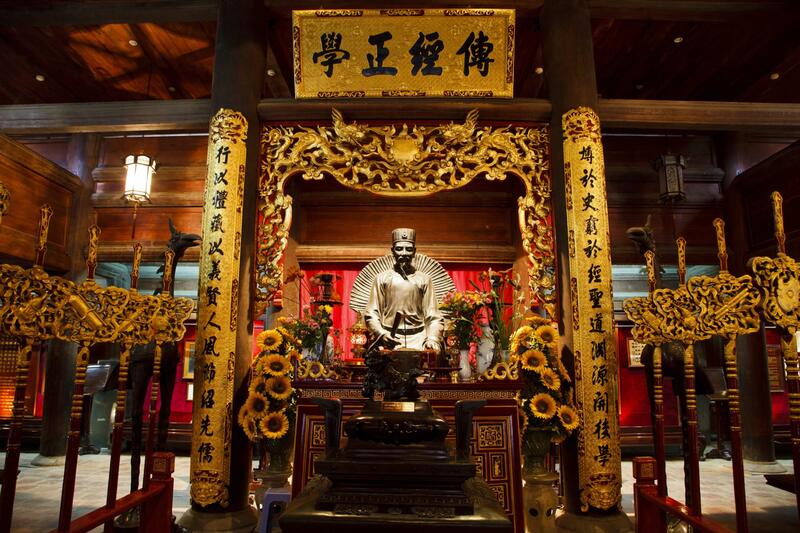The Temple of Literature Hanoi, called Vn Miu by local people, is an important historical place in Vietnam. It was made long ago in 1070 to show respect for Confucius who is a famous thinker and it became the first university of Vietnam later on. This cultural and educational symbol provides a deep understanding of Vietnam's learning customs and Confucius' beliefs. This article gives a complete explanation of its importance, structure, and what you can anticipate when going to it.
Historical Background
In 1070, Emperor Ly Thanh Tong established the Temple of Literature to honor Confucius, his disciples, and Confucian scholars. This complex was a hub for education and drew learners from across the area. In 1076, this place became home to the Imperial Academy. This made it more clear that this location is an important educational site. It worked as a university until the end of the 18th century, showing how much Vietnamese culture values Confucian beliefs and teachings.

The Temple of Literature became a center for learning that started the tradition of valuing education and good character, it was an important moment in history. The Imperial Academy, at its highest point, drew scholars from different areas in Asia which added to an assortment of ideas and information. The history of the temple also involves its part in influencing Vietnam's education rules and methods through different times under dynasties.
- Scholarly Influence: The site was instrumental in shaping educational practices and policies in Vietnam.
- International Recognition: Scholars from other Asian countries visited and studied at the temple, enhancing its academic reputation.
Architectural Features
The architecture of the Temple of Literature is an impressive model that reflects traditional Vietnamese design, combining touches from Confucianism with local architectural styles. The complex is organized in a variety of courtyards, each having its special aspects. The front part of the temple can be identified by a big gate called the "Great Middle Gate," which brings you into an expansive courtyard. The temple's plan is very clear, having the middle part for worship and learning and the outer parts having pavilions with gardens. The use of red lacquered wood and detailed carvings along stone steles shows art skill from this period.
The design of the temple's architecture is not only visually pleasing but also shows its functional purpose as an educational place. The arrangement of courtyards is made in such a way that it supports both learning and spiritual activities, expressing the combination of Confucian beliefs with Vietnamese architectural customs. Furthermore, this temple's structure has had an impact on how other historical and educational buildings in Vietnam are designed.
- Design Influence: The architectural style of the temple has inspired the design of other historical buildings in Vietnam.
- Functional Layout: The arrangement of the courtyards supports both educational and ceremonial functions.
Key Attractions
The Stone Stelae of Doctors is a main feature in the Temple of Literature. These stones have inscriptions showing the names of scholars who passed the royal examinations between 1442 and 1779. They rest on stone turtles, which represent long life and wisdom. People can also see the Well of Heavenly Clarity, an area for academic ceremonies. The history and cultural significance of the site are enhanced by the different pavilions such as Celestial Gate and Pavilion of Great Synthesis, which represent various facets of Confucian education and worship.
Apart from the Stone Stelae and the Well of Heavenly Clarity, there are many pavilions and courtyards. Each has its own historical background and cultural meaning. The buildings follow a style that shows off artistic success from this period as well as how important learning was back then. All these characteristics give people who visit an overall understanding of how significant Dai Temple is in Vietnamese history and culture.
- Educational Significance: The Stone Stelae honor scholars who excelled in royal examinations, highlighting the importance of academic achievement.
- Ritual Use: The Well of Heavenly Clarity was used in rituals that emphasized the scholarly and spiritual aspects of the temple.
Visiting Information
The Temple of Literature resides in the center of Hanoi, so people can reach it from different parts of Hanoi. It usually welcomes visitors every day, and its official opening time is from 8 AM to 5 PM. The area is kept clean and organized, with guides ready to share knowledge about this temple's history and culture. Entrance fees are modest and they help maintain the site. It's recommended to dress simply and respectfully due to the cultural significance of this temple. Visitors should also be ready for walking as it covers quite an extensive area with many courtyards and structures.
There might be many people at the site, especially when it's the high tourist season or on public holidays. It could make your visit less enjoyable if you go there during busy times. Having guided tours available is also beneficial as it allows you to explore more about the history and importance of this place.
- Best Times to Visit: Early mornings or late afternoons are typically less crowded.
- Tour Options: Guided tours are available and offer in-depth insights into the temple's history.
Cultural Significance
The Temple of Literature, apart from being an outstanding architectural accomplishment, is also emblematic of Vietnam's education history. It mirrors the regard for knowledge, moral principles, and appreciation of scholars' endeavors within Vietnamese culture. This location is a special spot for scholars and learners to show respect and have celebrations together, particularly when the Lunar New Year occurs with various events like ceremonies or traditional activities happening at this place. The temple's role in cultural celebrations shows how it continues to be essential for maintaining and spreading Vietnam's intellectual traditions.

The temple is not only a historical artifact, it remains an important part of Vietnam's learning and cultural festivities. The temple actively hosts traditional ceremonies and academic functions that honor its scholarly history in the country. The continuous protection and use of the temple for cultural activities show how significant this building is in keeping alive Vietnamese intellectual traditions.
- Ceremonial Role: The temple is a central location for traditional academic and cultural ceremonies.
- Preservation Efforts: Ongoing efforts ensure that the temple remains a vital part of Vietnams cultural heritage.
Tips for Visitors
To begin with, it is good to arrive at the Temple of Literature early in the day. This will help you avoid many people and fully enjoy its peaceful environment. You should wear comfortable shoes because there is a lot of walking involved here. Make sure that you give yourself enough time to look around different courtyards and read what's written on stone stelae; this will help in understanding Vietnam's scholarly history better. Photography is allowed, yet visitors are advised to maintain politeness towards other tourists and acknowledge the sanctity of this place.
Think about looking for any special activities or ceremonies that could be happening when you plan to visit because they might offer more understanding of the temple's cultural importance. It is useful to have a small amount of local money with you for any unforeseen purchases or donations.
- Special Events: Check for any events or ceremonies that may be held during your visit for a richer experience.
- Local Currency: Carry some local currency for any incidental expenses or donations.
Conclusion
To conclude, the Temple of Literature in Hanoi is a symbol of Vietnam's history and education. It's kept well with its architecture and cultural importance makes it necessary to visit for those wanting to know about the past of this country. If you like history or just traveling around, this place gives an important view into Vietnam's learning traditions and Confucian beliefs.





